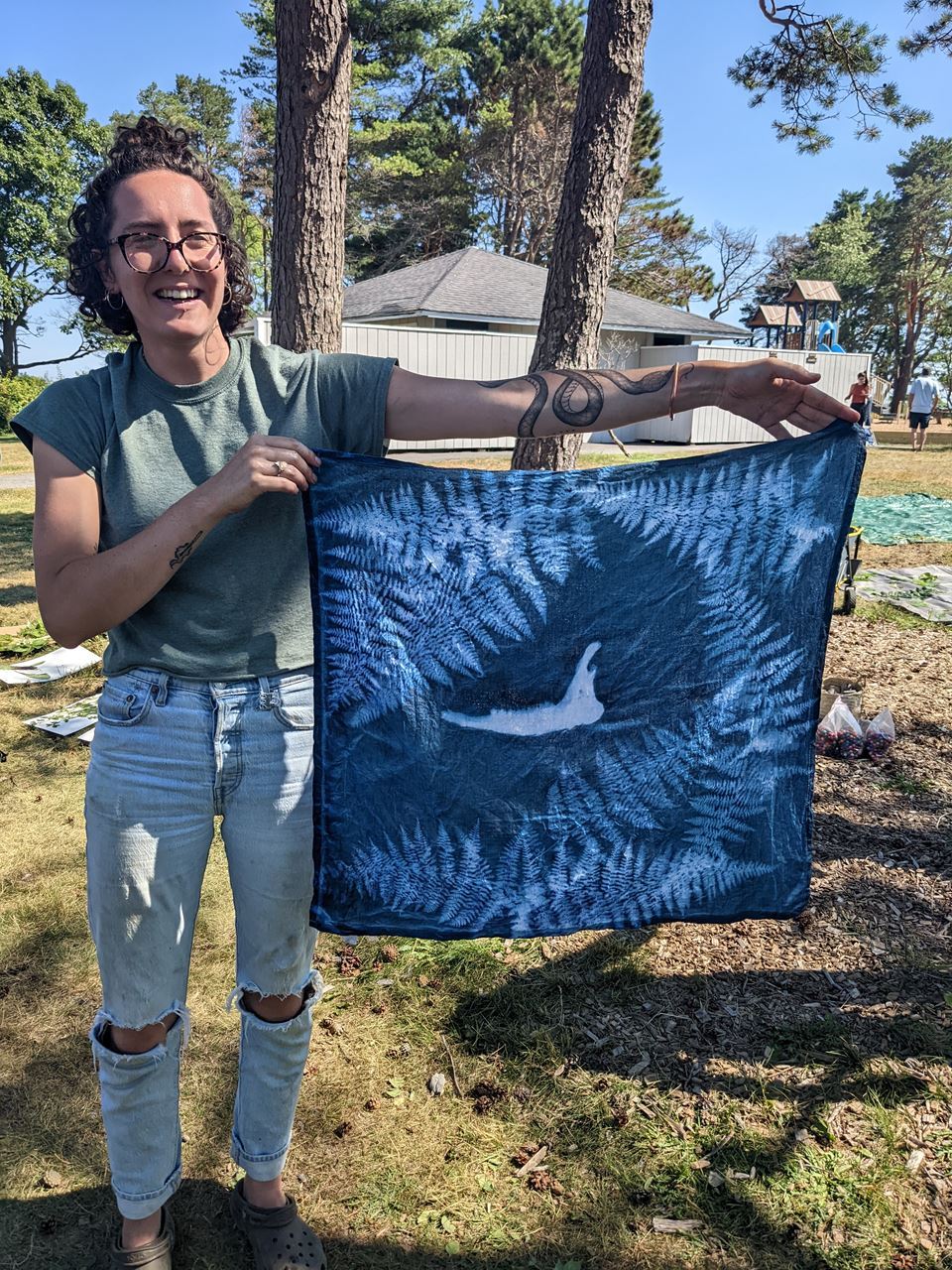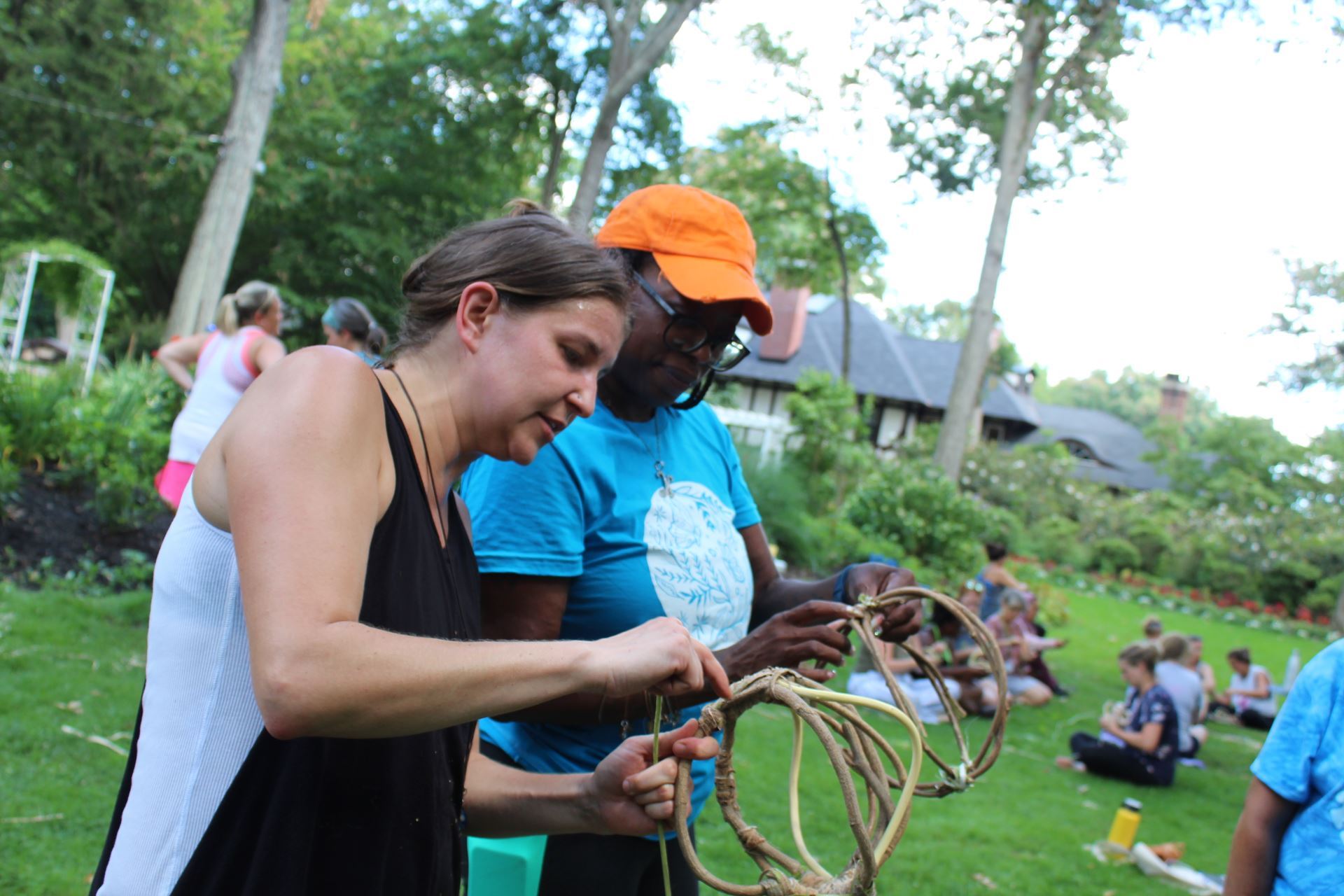Written by Abigail Gierke, ERAFANS Grants & Development Associate
An annual report documents what an organization has accomplished in the most recent year, plans for the future, and the financial underpinnings that make it all possible. It helps organizations build trust, celebrate successes and major accomplishments, acknowledge donor and volunteer support, and helps readers understand a mission. In our case, we want to connect with you—our supporters—the lifeblood of our organization. Through our annual report, we hope you’ll get a better sense of what we do and why your support matters.

ERAFANS is a member-based organization at our core, founded on this principle: If we want to connect children and families with nature, we must give teachers, childcare providers, and administrators the relevant training that they need. From our immersive Notchcliff Nature Programs and intergenerational nature series to our Nature-Based Teacher Certification and Forest Days Programs, we work hard to lay the groundwork for a lasting connection to the natural world for all.
Last year, almost 73 percent of our income came directly from our programs. They say that ‘if you build it, they will come,’ and when you look at our numbers, you’ll see that saying rings true. Our flagship program, Nature-Based Teacher Certification, served 361 educators in 2022. That is a 40% increase from 2021. The Mountain Laurel Scholarship Fund was created to fulfill the growing desire for our programming, with over 25% of program participants receiving scholarship support. Forest Days directly supports public schools and the increasing need for equitable learning opportunities. Last year, we expanded our reach in Philadelphia, PA and took to the outdoors with a preschool in Falls Church, VA (our youngest Forest Days participants yet!).

In 2022, we hosted our first ever Nature Teacher Art Camp, which brought together 25 educators to stretch their creative muscles. Participants gathered along the rocky shore of New Hampshire to practice nature journaling, organic art, wool felting, process art, and seaweed printing. We reignited the International Forest School Exchange opportunity to virtually bring together participants from four different countries to discuss the forest school model and share ideas. We hosted a session of Outdoor Learning in a Nutshell that, thanks to grant funding, was offered for free to Baltimore City educators working with kids birth-5 years old; ultimately increasing accessibility to nature for all.
Early childhood education refers to children from infancy through age eight, and our opportunities tend to focus on that age range. However, one part of our work that you won’t find in the numbers is a trickle-down effect that can’t be measured. Educators who sign up for an online course take their new knowledge into their classrooms; they will share lessons and different ways of thinking with fellow teachers, and offer new ideas and insights to parents at back-to-school night. Children who had the opportunity to be a part of Forest Days will bring their caregivers back to the school grounds with a new confidence to share their favorite climbing tree or point out tracks they notice in the mud.

Teachers certified through our Nature-Based Teacher Certification course confidently implement nature-based learning in their classrooms. They feel empowered to advocate for this type of learning with the administration and families, and model the benefits of time spent outdoors to others. Others start new nature-based programs in their community, or expand their current offerings to serve more families.
Those who participate in our retreats or book clubs come away with new connections and feel rejuvenated and inspired to make nature-based learning a reality in their communities. The list goes on. Through our work we see how the simple act of spending a small amount of time outside can turn into a habit and change lives—especially for our children.
So take a look at the report and tell us what you think, but then turn off your computer and get outside!
ERAFANS Annual Report FY2022.pdf
.png)